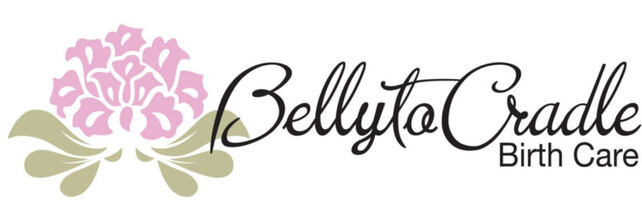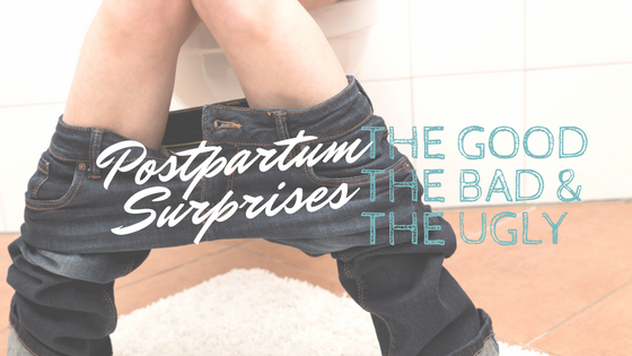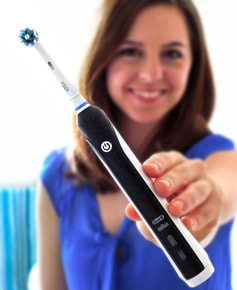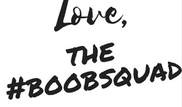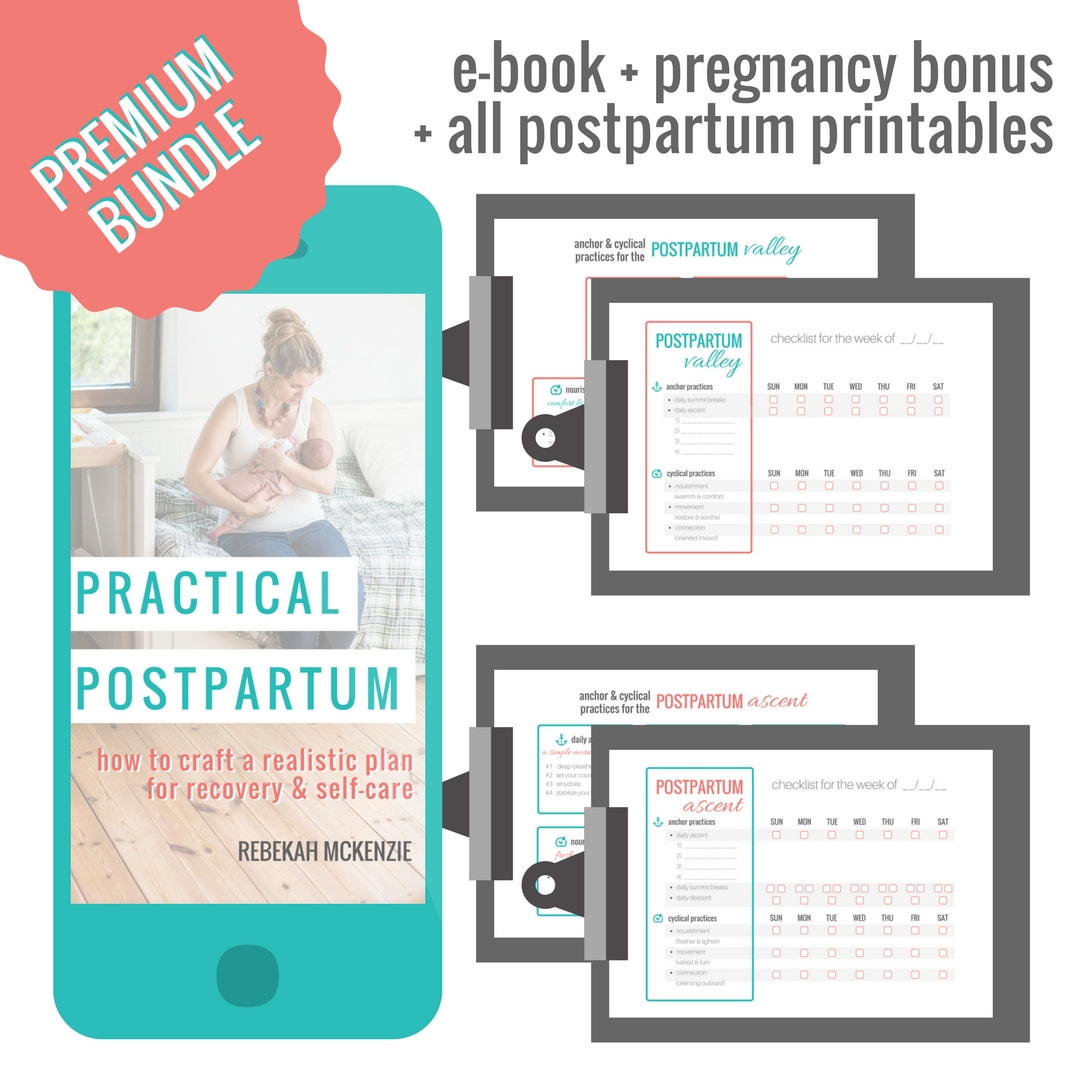 Christina, BEST Doula Christina, BEST Doula As Doulas we always talk about what to expect before and during labor. But something we might overlook prenatally is what to expect after your little bundle arrives. So, I asked mothers to weigh in on their postpartum experiences and what no one had told them about. Here are the top things our clients were surprised by in the postpartum! Breastfeeding is HARD Nursing can be painful for some women, especially initially--and it generally is just challenging. Steph says, “I remember calling all of my mom friends and saying, 'Why didn’t you tell me?!'” When establishing a nursing relationship, normal pain may last for the first 30-60 seconds of a nursing session, which could last for up to two weeks, but pain during sessions should not last the entire feeding, and soreness between sessions should improve everyday and not get worse. If pain and soreness persist, contact your local IBCLC--persistent pain can usually be resolved by assessing latch, positioning, and for the potential of tongue and/or lip ties. Hemorrhoids are a pain in the butt “Nobody told me what hemorrhoids could/would be like.” Ashley shared. If you have hemorrhoids while you’re pregnant, there’s a chance they’ll come back to plague you post-delivery. Hemorrhoids are a result of stress on the perineum in the months before, and during delivery. For some, hemorrhoids may simply be itchy and annoying but for others, they can be pretty painful. Here’s a few things to help ease the discomfort:
This is just crampy... So you've birthed your baby and...YOU'RE STILL HAVING CONTRACTIONS?? What is that about? Afterbirth pains are caused by contractions of your uterus as it involutes, or returns to its pre-pregnancy size. They are usually mild for first-time moms but may get more intense with each subsequent delivery. Afterbirth pain will be most intense for the first day or two, but it should start tapering off around the third day or so. Nursing can cause afterbirth pains to intensify because your baby’s sucking triggers the release of oxytocin. The First Poop Pooping after having a baby can be intimidating to say the least. Linda says, "No one warned me about the first poop. For me, it was worse than recovering from a C-section infected with MRSA.” That sounds terrible, Linda! Voiding your bowels for the first time can be REALLY scary, but it should NOT be terrifying or impossible. Staying hydrated before, during, and after delivery of your baby will help make your first “poo” a little easier. Asking your doctor for a stool softener may help to assuage your fears. Don’t forget to stay hydrated after coming home… I speak from experience on that one, otherwise there’s not enough Vaseline and Jesus to help if you don’t! Utilizing a Squatty Potty may also help you assume as natural and relaxed of a position is possible which should reduce the need to bear down. Many moms don't know that it can also be very normal for bowel regularity to take several days to return to normal after birth. Second Night Syndrome More commonly known as cluster feeding, the second or third night after baby is born can make a lot of moms feel inadequate and overwhelmed. “Holy crap that second night in the hospital was probably the toughest in my life to date!" says Kelly. Immediately after your baby is born he/she will most likely be very sleepy, so take advantage of this by limiting visitors and get lots of rest. Charge your iPad so you can binge watch Netflix, have your husband get the snacks you like, act like you're having an awesome slumber party, and just try to enjoy those moments bonding with your baby--sans slumbering. Empty Bed Panic
Being a Mom is hard, and most of the time exhausting. You now have this super-demanding human dictating everything you do, you're sleep deprived, your hormones are all over the place, and now you're starting to feel a little loopy--you can’t even shower without hearing phantom cries! Sometimes, this can result in hallucinations of a sort. Kelley comments, “I feel like I was pretty prepared for what could happen postpartum, but I had never heard anyone talk about getting so incredibly tired you hallucinate.” Know you’re not alone if this happens, as some point many, many moms go through it. A common experience is waking up thinking you’ve fallen asleep with your baby in your bed, ripping the sheets off, frantic because your baby is nowhere to be found, while your partner tries to reassure you the baby is in her own bed, all to no avail. This is empty bed panic--you’re exhausted! Call on your support team for some help. While they watch your baby, you go soak in the tub, then try to get at least three hours of sleep in a row. I bet you’ll wake feeling more like the woman you remember. Milk Happens Planning to nurse? Well, there may be milk EVERYWHERE. "No one told me I might wake up SOAKED in breastmilk!" Fallon says. Another client adds, "Oh, and the milk fountains during intercourse!" Yes, and yes, these might happen, but it’s not as bad or gross as it might sound! Putting a large, soft towel under you while you sleep, or before, ahem, shenanigans, will help make clean up easy. And if it happens during sex, oh well--your partner watched as you carried, birthed and nurtured their baby! Their love for you is beyond anything you could ever imagine. I bet they'll just be glad to finally be able to have sex again. If you’re really worried about it, just wear a bra with your Milkies or breastpads in--easy peasy. Not everything about postpartum is horrible, or painful, or scary. Quite the contrary, postpartum is fun, free, and intoxicating. You literally forget yourself for the longest time because your love for another human literally takes over. Life will forever be different and intriguing, what will they do next? What great milestone will they reach that makes as love them even more? Oh, the love a Mom has for her child! It surpasses all the love you could have ever known or felt and literally erases all the “big, bad, and ugly” parts of postpartum. Relax Mom, you’ve got this! Much Love, Christina
4 Comments
Have you experienced the “mombie” (mom+zombie) state yet? You’re so tired from lack of sleep that you feel only barely alive and functional, easily confused and unable to focus. You feel like all you do is feed the baby in the same spit-up stained t-shirt and yoga pants you've worn for two days--or is it three now? You can't find your phone and you can't remember when you actually ate a full meal, had more than three hours of consecutive sleep, or took a shower. Why is it that motherhood is synonymous with sleep loss? There are actually two sets of circumstances surrounding the beginning of motherhood that seem to set the stage for being so dang tired: late pregnancy and early postpartum. At the end of pregnancy, several factors culminate in prenatal insomnia. You may find it difficult to get comfortable during the night. When and if you do get comfortable enough to sleep, you may be disturbed by leg cramps, heartburn, baby kicks, or an increased need to urinate. Additionally, you may find that once you’re settling in and powering down to sleep, your mind kicks into gear with all the nesting tasks you have left to complete and maybe even anxieties surrounding giving birth or those newborn weeks. Just after the birth of your baby, another set of circumstances emerges to cause the sleep deprivation for which early postpartum is so infamous. The most obvious factor is your baby waking you up, needing to feed or have a diaper change. This is partly due to your baby’s tiny stomach capacity and innate need to feed often, but it’s also due to the fact that your baby’s circadian rhythm (the sleep-wake cycle) hasn’t yet calibrated to match that of the other earthlings in your household. Baby is still used to being awake at random times in the darkness of your womb and isn’t accustomed to, or even capable of, sleeping for long stretches of time in the dark hours. And if you’re worried about baby’s health and safety, that can also contribute to poor sleep quality. So, what can we do? While knowing the causes of sleep loss can be helpful, let’s bridge the gap and cover some helpful tools. Some of these tools are in the category of prevention: keeping the causes of sleep loss at bay (or from occurring at all). Others are in the category of coping: acknowledging that “it is what it is” and taking some action to mitigate the effect of sleep loss. Preventing and Coping with Sleep Loss:
All over the world, moms are celebrating World Breastfeeding Week, some even honoring the event with traditions like the Global Big Latch On in some communities (come see us at the Global Big Latch on of Escambia & Santa Rosa Counties). In honor of this week, we are keeping it real. It seems like the minute you announce your pregnancy, the advice starts to pour in from all directions--not just for pregnancy and birth, but for breastfeeding too. From "Don't eat broccoli or asparagus, it will give the baby gas," to "Never wake a sleeping baby to eat!" we are sure you've heard all the strange (and not-so-great) suggestions there are out there. And while there are some strange pieces of advice that are also mythical, there are also some strange pieces of advice that can be very, VERY helpful and real. #1: Give the ladies air time. Yes, we are suggesting you go topless once in a while. Letting your twins free while you're breastfeeding can be a very important part of the process--not only because your nipples are not accustomed to friction for 8 hours a day at first, and fabric against them can feel like rubbing shards of glass on them as they heal from any initial damage, but also because wearing a bra or shirt 24/7 can promote bacterial and fungal growth. Yeast and other bacteria thrives in dark, moist, warm places (aka, your nursing bra), and your breastmilk contains carbohydrates/glucose, which also feeds bacteria and fungi. So by going topless, you are not only giving your nipples time to heal and be more comfortable, but you are also allowing them to stay dry so that you can help avoid a thrush outbreak or other bacterial infection in your milk ducts. Wearing a button up shirt or a robe can facilitate this--hey, you could even just cut some holes in an old t-shirt and be set! Just make sure that you don't forget about your state of dress (or lack thereof) and accidentally answer the door for the UPS man. #2: Strange breastfeeding positions are sometimes the best. One of the most common issues in the early days of breastfeeding, and then later on during changes that can impact supply, are plugged ducts. This is when fat globules in your milk collect in one part of a duct and form a clog in the flow of milk. Many moms feel this as a hard knot that could be anywhere from the size of a marble to a golf ball. When this happens, one of the best ways to work the knot out is to lay your baby flat, and "dangle" your breast over your baby to feed, with the baby's chin against the knot. This allows gravity and the baby's oral movement to work the knot out. (See this position here). Another fantastic breastfeeding position to help clear plugged ducts (or prevent them if you have them happen more than once) is the "over the shoulder" position. Imagine throwing your baby over your shoulder, upside-down, and you've about got the image! In this position, you are laying down on your side or back, and baby is lying with legs literally over your shoulder. (See this position here). These positions aren't just for plugged ducts, though. Switching the position baby feeds in frequently stimulates different parts of the breast, which can increase supply AND help prevent baby from developing a preferred nursing position or side. So, if you've struggled with plugged ducts more than once, or are uncomfortably engorged in the early days, this can be an especially helpful position if you have a very little one. #3: Other Ways to Remove Plugged Ducts. Plugged ducts can be nasty little boogers that are both painful and a precursor to mastitis (an even nastier booger). Thus, our desire to help you remove them as easily as possible, and avoid them in the future. And there is more than one way to fix this problem. The key with removing the clogged ducts is to dissolve the plug of milk fat--and this can require massage, heat or vibration. So, our favorite tools to suggest for plugged duct removal are:
#4: Put that stuff on everything.
This hearkens memories of My Big Fat Greek Wedding where the father of the bride believed that any ailment could be cured by Windex. Well, just switch out Windex for breastmilk and we've got a similar situation going on here. From pink eye, to scratches and cuts, to ear infections, lots of moms are now treating common ailments with a drop or two of anti-body filled breastmilk. In fact, many moms are stashing extra breastmilk in tiny syringes in the freezer just for situations like this. It might sound crazy, but there's lots of evidence that it works!! So, in celebration of World Breastfeeding Week, maybe stash away these "crazy" suggestions for later use--you might need them. And we'd love to hear about any weird or strange breastfeeding suggestions you've been given that have worked for you!  Lydia DeCastra Lydia DeCastra As early as I can remember, my grandmother always said, “it takes a village to raise a child.” Although she usually repeated this proverb to comment on the Jones baby’s outbursts at church on Sunday or to justify disciplining children at the local supermarket, this proverb took on a whole new meaning when I joined the Belly to Cradle team. Today I feel compelled to share some facts that make The Belly to Cradle Team unique in the world of birth care. #1: Diversity of Caregivers Talk about a village! At Belly to Cradle, you can personally choose the caregiver that best meets your desires and needs as a client. With four professional doulas and two board certified lactation consultants all with different backgrounds, personalities, life experiences, certifications, service fees, and all living in different geographic areas within the Greater Pensacola, FL, to Mobile, AL, you the client are more likely to find a caregiver that perfectly suits you and your family’s needs. #2: Continuity of Care When you hire Belly to Cradle, you’re not just hiring your individual birth doula or lactation consultant, you’re actually hiring a whole network--a whole force of knowledgeable, caring, professional women! Because we are a group of women in business together, we as a group are accountable to not only all of our clients but to each other. If due to some disaster or unforeseen circumstance your individual doula or consultant cannot make your appointment or birth, another Belly to Cradle caregiver will be on the way and will be able to seamlessly fill-in at no additional cost. Talk about great insurance! Even more wonderful, is your ability as a mother and a parent to enjoy continuity of care with a business that you trust. Maybe you begin your Belly to Cradle journey by hiring a doula for your first birth and afterwards hire one of our lactation consultants to help your baby establish a better latch. Or maybe you needed some breastfeeding help from a lactation consultant and through your positive experience with Belly to Cradle decide you want to hire a doula for your second birth--however you choose to utilize our care, we are a "one-stop-shop" of caring, collaborative birth professionals. #3: In-Home Care! Going back to the grandma chronicles again; I always remember that dear old woman muttering under her breath about having to get all ‘dolled up’ to go see her various caregivers for appointments. “I remember in the good old days when people used to come to you,” she’d declare. At Belly to Cradle, just like grandma says, ‘we come to you!’ Don’t worry about the 3 day old breast milk sitting on the kitchen counter, laundry in piles on the couch, your toddler’s half consumed juice pouch stuck between the crevices of your couch. We’ve all been there…done that. Don’t stress! You just stay in your yoga pants and an old t-shirt and let us take care of the rest. #4: Invaluable Connections and Local Resources Belly to Cradle has been serving the greater Pensacola, FL area since 2011 and we have worked very hard to build and maintain a strong, professional reputation within the medical and birth communities in the local area. As our client, you will have access to countless resources during and after your pregnancy to chiropractors, photographers, midwives, massage therapists, many of which Belly to Cradle has a close, established working relationship with. In addition, depending on the additional service that you need, you may qualify for a discount of 10-20% off services with some of Belly to Cradle’s preferred business partners listed on our website. #5: Alternative Payment Options We understand that having a baby is expensive--and the thought of spending more than you absolutely need to for the cost of your care can be overwhelming. So, we offer various different payment methods and rates. Aside from offering a military discount to clients, our Gift Registry allows loved ones and friends to give you the invaluable gift of pregnancy, labor, and postpartum support by gifting contributions toward your balance with us. We also are willing to put your doula care payments on ‘layaway’ if you are not able to pay in full for services. We will work with your unique financial situation and will keep an account of payments made via our convenient and easy Payment Portal. While we can't currently take insurance payments, we ARE approved to accept HSA and FSA cards as payment for any service that we provide. Now that’s something to get excited about! #6: The Belly to Cradle Family
At Belly to Cradle our relationship with you and your family does not end after your final prenatal appointment with your doula or your last house visit from your lactation consultant. We stay in touch and will get you in touch with other local Belly to Cradle moms and families through Facebook groups, local events, and Belly to Cradle hosted mommy- baby get-togethers. You will be part of our Belly to Cradle Family. Birth is transformative. Ordinary women blossom into mothers, ordinary men become fathers…and the family takes root. Whether this is your first birth or your tenth, the process is messy, chaotic, unpredictable, but yet so incredibly beautiful. And we, the women of Belly to Cradle, LLC can’t wait to squat, push, and latch with you on the road to a happy, healthy birth and family experience! Let's say you recently had a baby and started breastfeeding because it's something you have always wanted to accomplish, or maybe it's something you just wanted to try out and fell in love with the bonding experience it creates with you and baby. But maybe you've started to face challenges, or are just unsure whether everything is on the right track--well, that's where we come in! But why does a 1.5-2 hour visit cost so much? Right now, an initial home visit with Belly to Cradle costs $125 (for around 90 minutes) and a repeat home visit (around 60 minutes) costs $75. In the office, you’ll pay $100 for that 1.5-2 hour initial visit, or $50 for a follow-up. Or, if you have an older baby, have already seen an IBCLC, or just need a weight check, we have some appointment times specifically designed for these scenarios, too. For a full list, check out our website here. Initially this may seem like a lot to spend, especially with all the other baby-related costs you have to be concerned about, and we understand that! It’s tough to ask a family who may be struggling with breastfeeding to pay to get help -- we wish we could do this work for free! And who REALLY wants to discuss money?? It's safe to say that most, if not all, lactation consultants are in this business, not for the money, but simply to help moms and families have the best postpartum they possibly can, while helping babies eat! But, the time we spend with you at your consult is actually the tip of the iceberg. But why is the initial visit the most expensive? Typically, we will spend on average 4 to 5 hours on each of those initial visits. We start by talking with you to figure out scheduling and what's going on with mom and baby, or by reviewing your submitted intake form and researching your concerns so we’re exceptionally prepared when you walk through our door (or we walk through yours!). Our goal is to make the most of our time together, so we try to get the formalities out of the way before we even meet you. A home visit is a wonderful asset to your postpartum--not having to pack up the baby gear and the baby while wondering how you'll survive yet another appointment, being able to have a lactation professional help you breastfeed in your favorite chair--hey, you don't even have to get dressed or look "presentable"! We LOVE providing this service because of how many needs it meet in the days immediately following birth. The cost is higher in this setting though, because of the time spent driving to and from your home. After the initial appointment, we generally spend about an hour charting (we are required to keep charts since IBCLCs are classified as medical professionals) because we like to spend the full appointment focused on the family and that beautiful baby, not staring at a screen. And, after any appointment with us, you now have 2 weeks of unlimited text, email or phone calls to ask any questions, get support or address any concerns you may have. That means you sometimes receive an additional hour or more of our time and attention -- and we wouldn’t have it any other way. We know you may not be able to remember everything we talked about in person, and you may have more questions or an ongoing difficulty we can continue to help with. This is yet another part of our care that we love to provide! We are not of the opinion that breastfeeding is "best" for every family--some families benefit so much from reassessing their infant feeding goals and choosing alternative feeding methods (such as pumped breastmilk in bottles or formula). BUT breastfeeding is very important to many families, and since it is the biological norm, many more families are choosing breastfeeding after learning more about it and gaining support as they start out. And, some families are choosing feeding with breastmilk after assessing not only the health benefits but also the cost comparison with formula.
Breastfeeding is free! Yes, you can buy nursing bras, nursing clothes, boppys, breast pumps, etc. But none of that is NEEDED to breastfeed. However, to formula feed it's on average $1,733.75 for the first year to buy just the formula; that's enough money to take your family to Disney! When broken down, formula can be as cheap as 9 cents per ounce up to 31 cents an ounce (depending on what brand and type you choose). That cost does not include bottles or the potential increased costs of healthcare for those babies who don’t receive breastmilk. (And all of this doesn't even include the time spent preparing & cleaning bottles, or the money/time spent on obtaining sterile water for safe formula prep.) We want your breastfeeding care to be affordable, of course. So here are some ways to keep it that way:
We are here for you no matter what you choose--from how you feed to your baby, to who you see for your lactation care. Let us know how we can support YOU! |
This is us.We are Women. We are Moms. We are here to help your family blossom. Archives
September 2019
Search
All
|
Building 4
Pensacola, Florida, 32504
We proudly provide
Childbirth Education, Placenta Encapsulation, Lactation Consultations & Doulas
in Pensacola, Milton, Pace, Gulf Breeze, Navarre, Crestview, Ft. Walton, Florida.
Copyright 2017, Belly to Cradle, LLC.
Photo Credits: Kayla Reeder Photography, Lynette Sanders Motherhood Photography,
Savanna Morgret Photography, Finding Beauty in the Ordinary Photography,
& New Light Birth Photography
|
|
